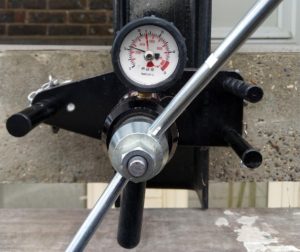What is Pull Testing?
What is Pull Testing? And why is it essential? These are the questions we’ll be answering in this article. We’ll also be discussing the general process and explaining the role of the Construction Fixings Association concerning Pull Testing.
What is Pull Testing?
Otherwise known as Anchor Testing, a Pull Test assesses the stability and integrity of the fasteners used to secure heavy equipment and beams. It also determines the load-bearing capacity and durability of your structures to ensure they’re safe for use.
Why is Pull Testing Important?
Pull Testing assures that your structures won’t collapse unexpectedly when erected. As heavy loads and lack of weather resistance are the primary instigators of metal deterioration. So subjecting your structures to testing before installing them could save lives.
What Happens During a Pull Test?
Anchor Testing is done through various methods that simulate the real-world conditions your structure may encounter once installed. These methods each apply strong force or a heavy load, proving whether your structure is suitable for the intended load without failing.
A Pull Test will measure load capacity, deformation, and displacement of the anchor.
There are two types of Anchor Testing, with particular methods more suited to different requirements.
- The Process of Allowable Load Testing
Allowable Load Testing involves fixing a hydraulic pull tester to an anchor and pulling it until it breaks. This test determines the stress levels required for your structure to collapse. Usually, this type of Anchor Testing is repeated five times, with the average being the final result.
A replica of your anchor will be tested on the exact surface material you intend to build on. Establishing the maximum load capacity of your structure and providing a number on the safe load capacity for regular use.
- How Does Proof Testing Work?
The purpose of proof testing is to assess the overall structural strength and integrity of your fixing. A load higher than usual is applied to see if your fixing can withstand it and confirm where the safety margin is.
Both tests serve to assure the maximum load capacity of your structure so the limit is not exceeded. In conjunction with each other, these tests provide an accurate, dependable report for you to reference when necessary.

Who can Conduct a Pull Test?
Only engineers qualified to the standards of the Construction Fixings Association and BS 8539 regulations should conduct a Pull Test. This ensures your Anchor Testing is performed by highly skilled and knowledgeable personnel who will provide accurate readings following the test.
What is The Construction Fixings Association?
The Construction Fixings Association represents the manufacturers of structural fixings to be drilled into concrete, brick, block, stone and plaster. They work closely with contractors, installers and testers of structural fixings to provide training and ensure CFA standards are met and best practices are followed.
How can Streval Help with Anchor Testing?
Here at Streval, we are trained to CFA Standards to complete Pull Testing and are experts in BS 8539 regulations. This allows us to conduct accurate tests that assist our customers in completing safe, structurally sound projects.
Please don’t hesitate to contact us if you have any further questions about Pull Testing or what Streval can do for you.

